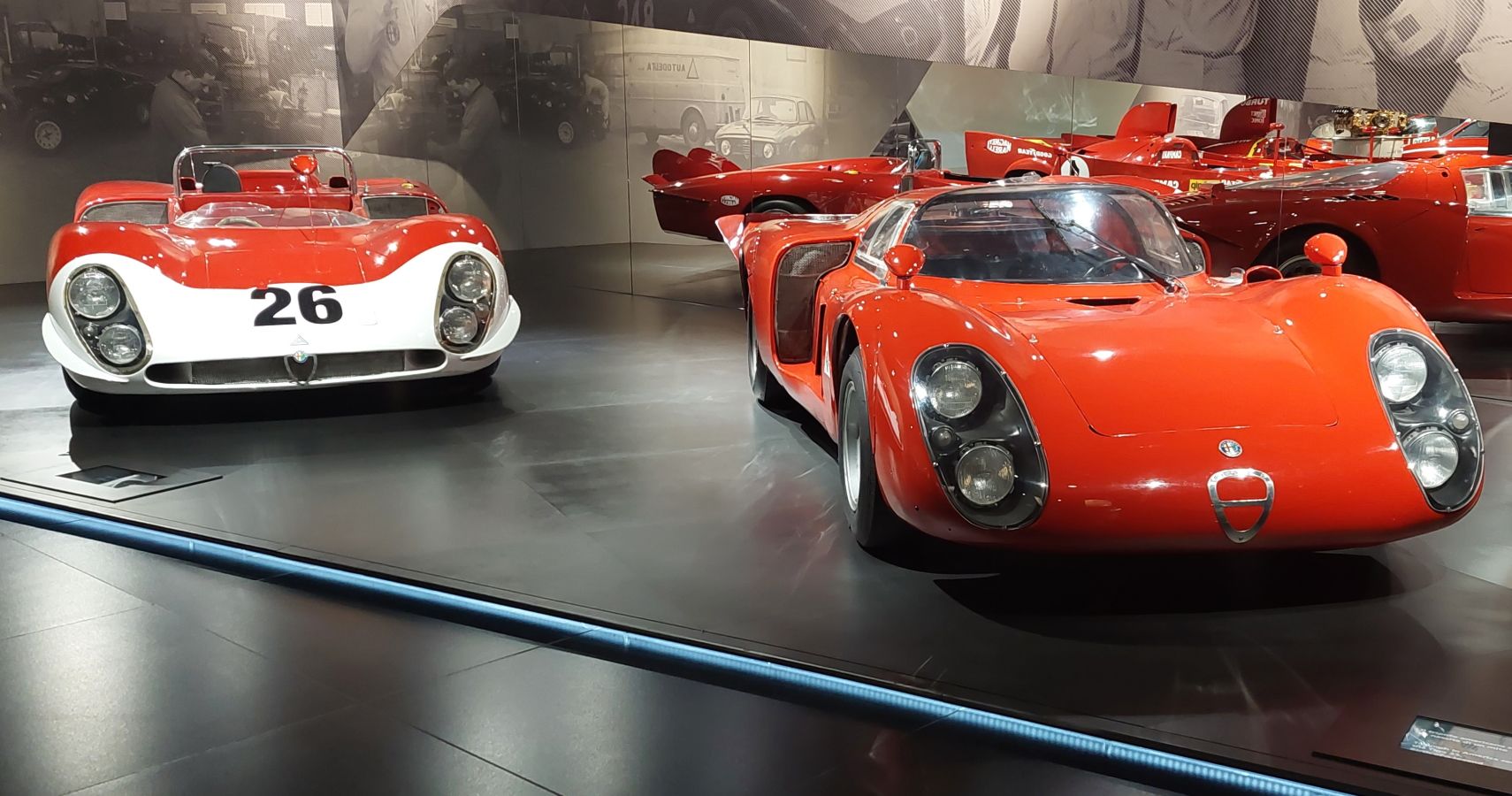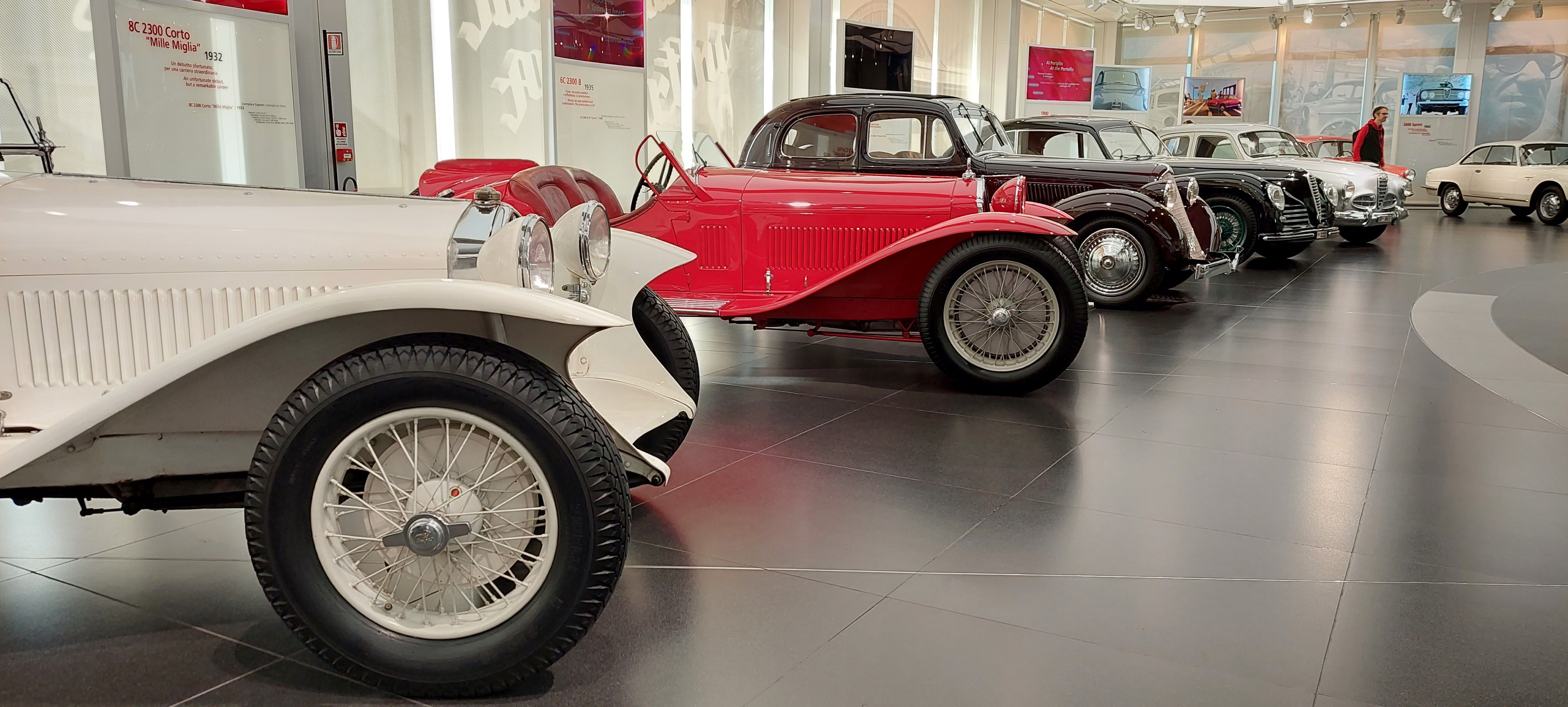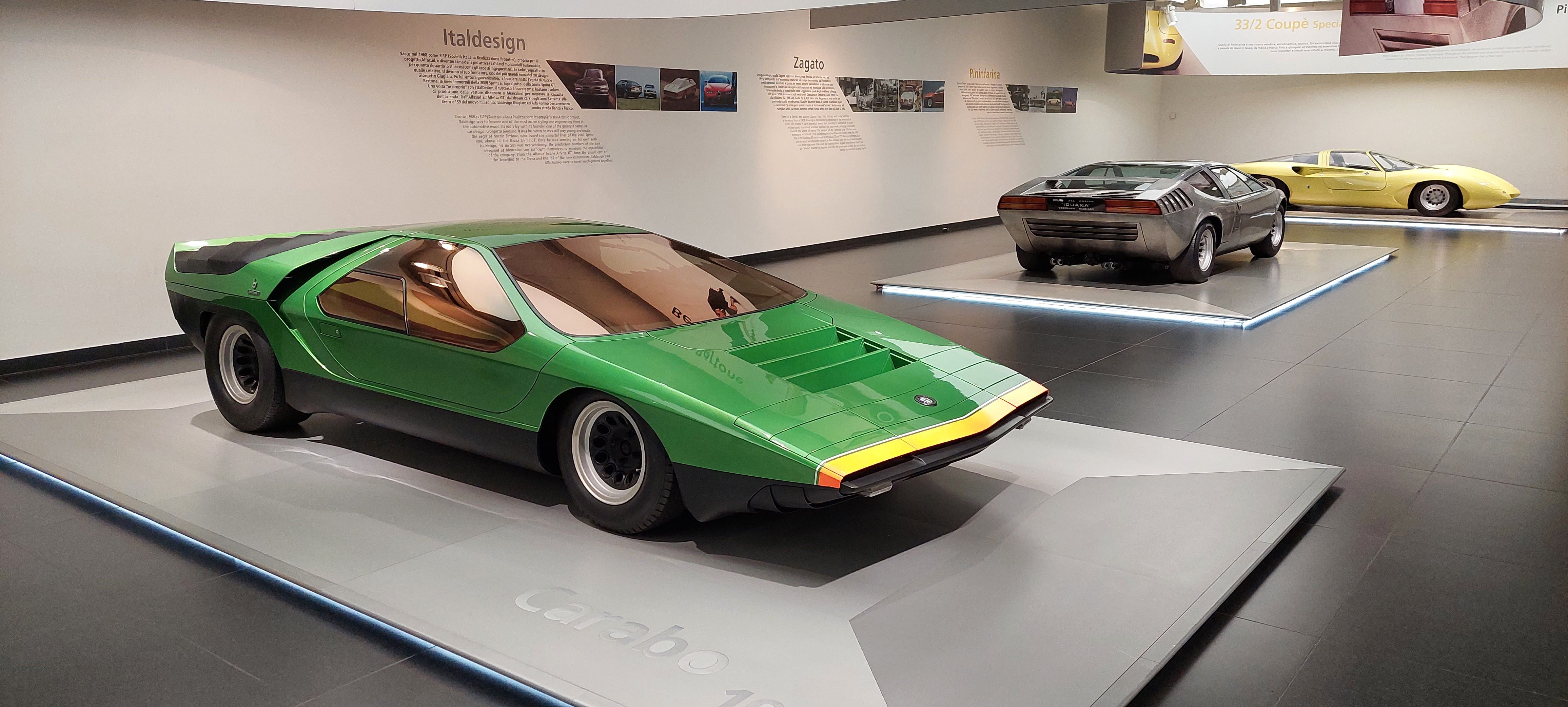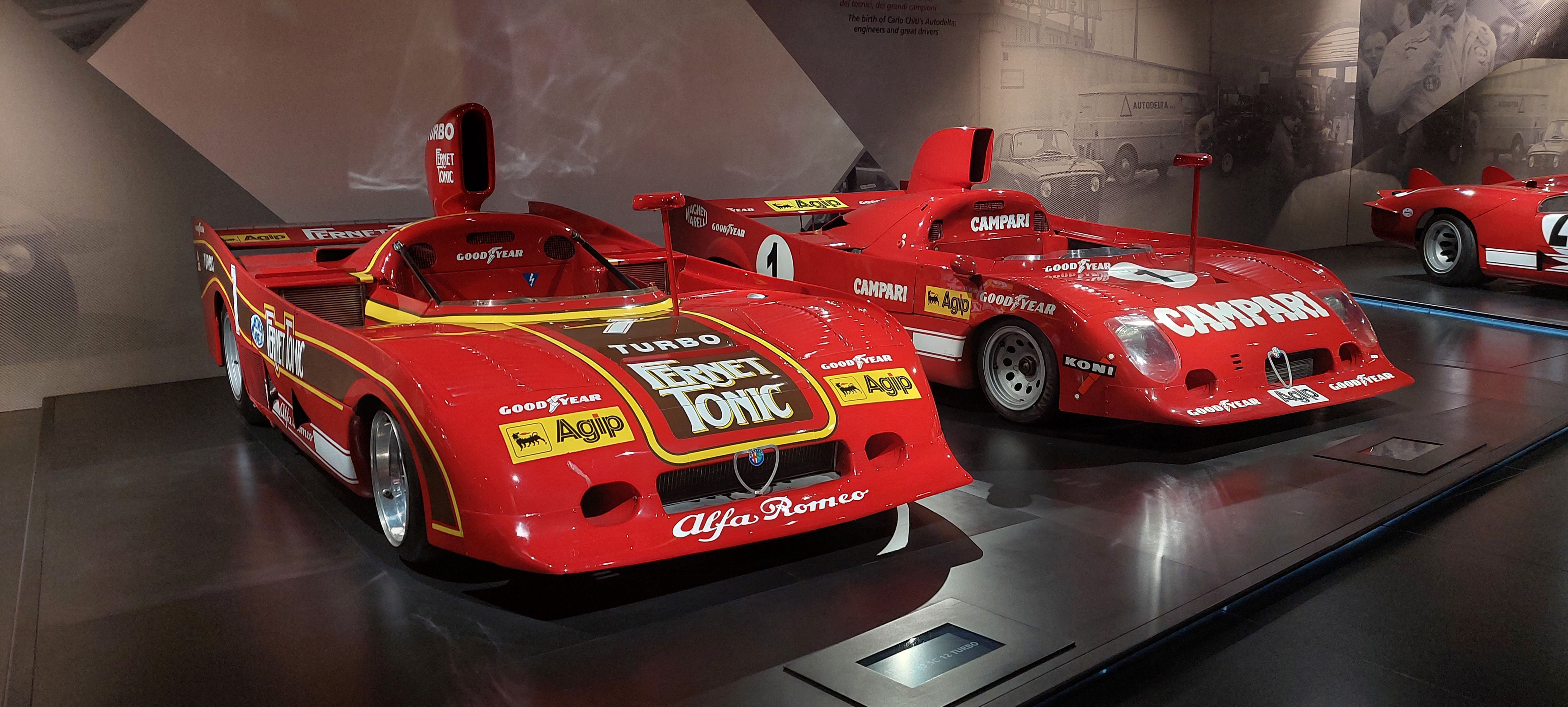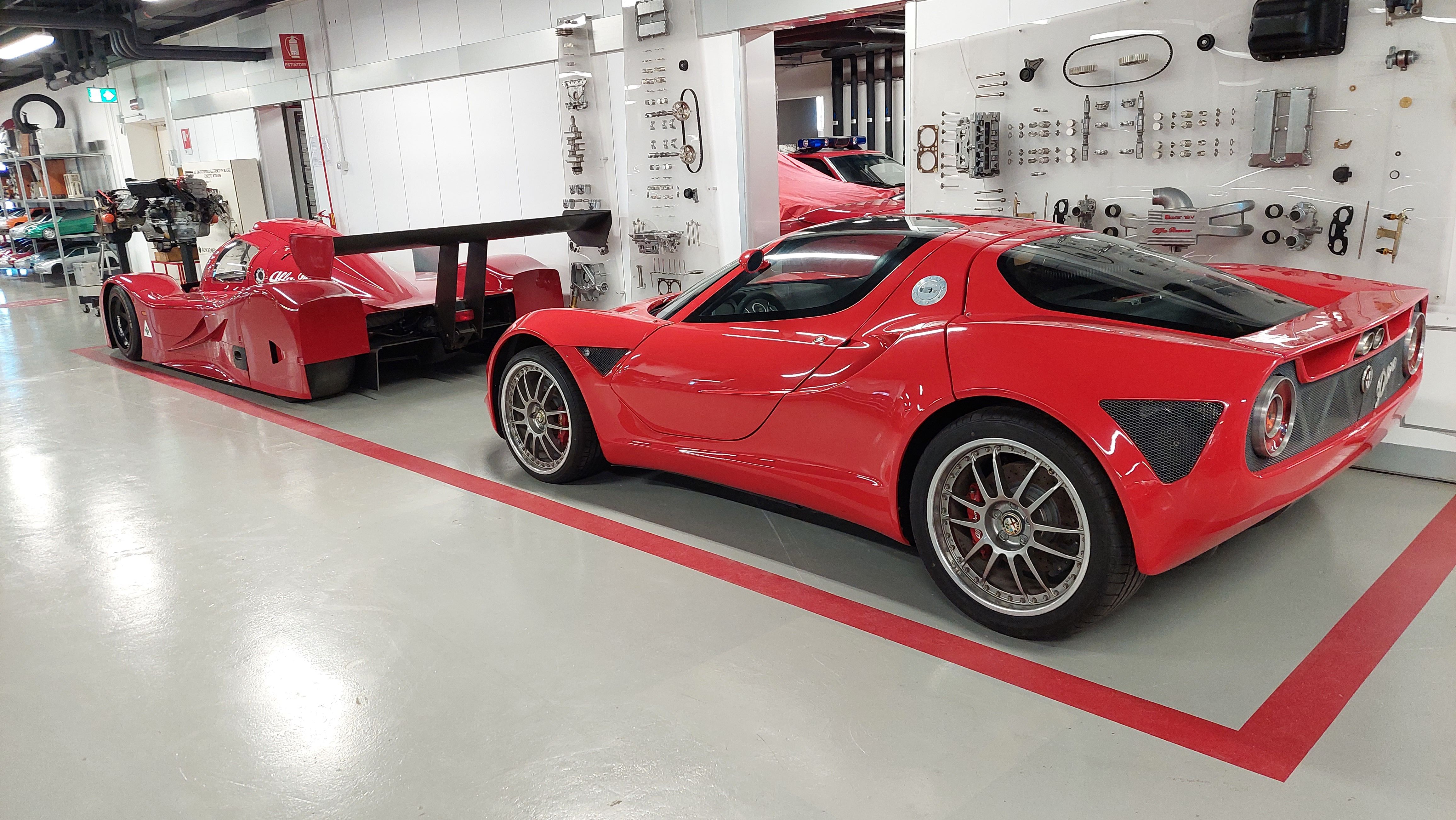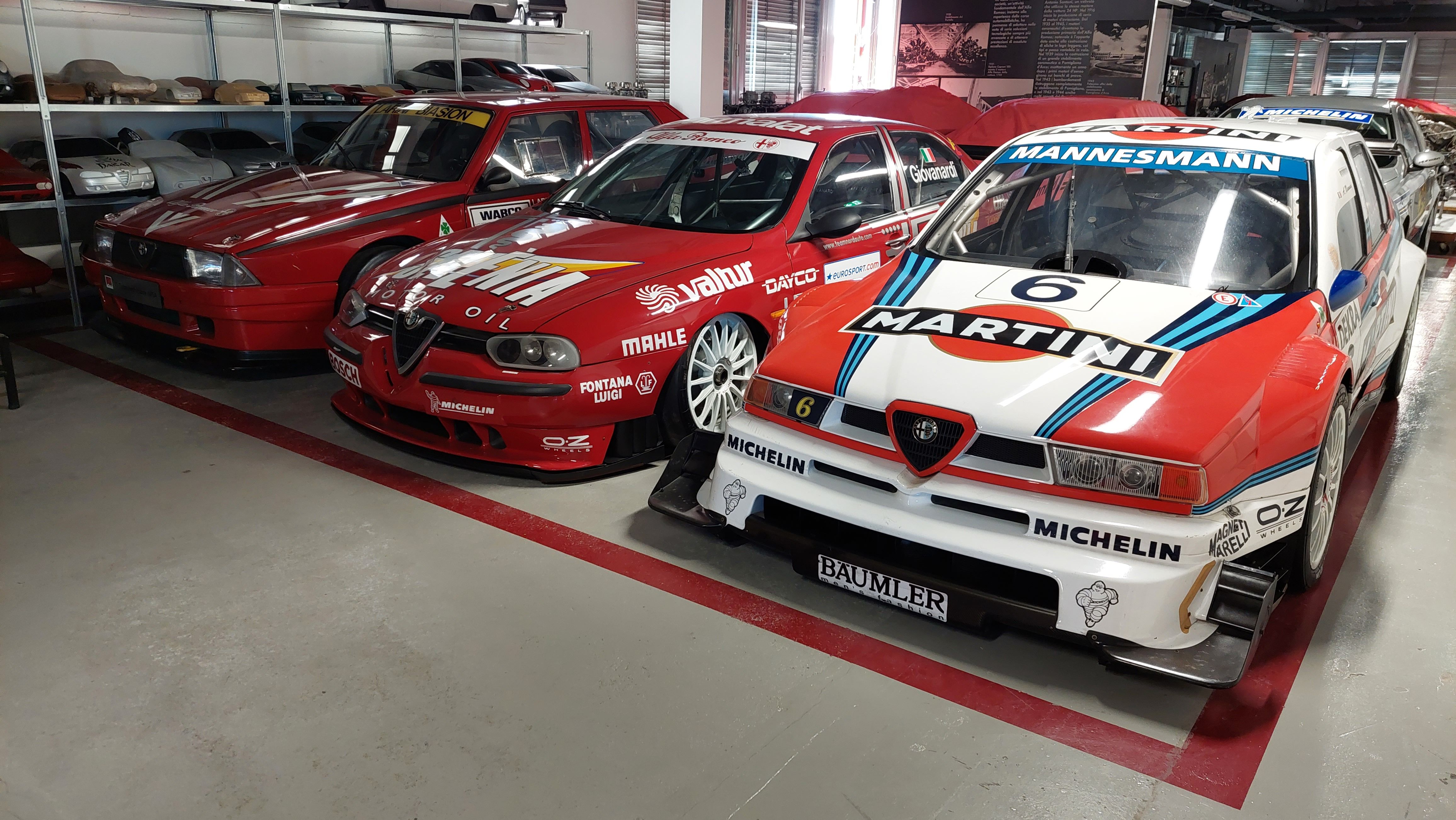Around 45 years ago, the Alfa Romeo Museum was opened to the public as a heritage hub of one of the oldest automotive brands in Italy, with plenty of history filled with high and low points. From winning the 24 Hours of Le Mans race four years in a row with the 8C 2300 in the mid '30s, to winning the first ever Formula One World Championship in 1950 and World Sportscar Championship titles in the '70s, to being bought out by FIAT, steadily decreasing production numbers since the '70s, and sharing platforms and components with less prestigious brands.
The museum is split in four parts: The "Timeline" area shows a selection of road cars from its inception to the early 2000s models, "Bellezza" holds some of the most rare concepts and exclusive pre- and post-war cars, and "Velocità" is the home of Alfa Romoe's race cars, from F1 to sports car racing, DTM and Le Mans. The storage room holds many concepts, prototypes and race cars that are not usually displayed in the normal collection.
The Alfa Romeo Museum And Storage Collection: The "Timeline" Collection
The car part of the museum starts with the Timeline collection at the third floor. There are a few airplane engines and a plane right after the reception. Here, the first cars displayed are some of the vintage models, like the RL Super Sport, 6C 2500 Sport "Freccia d'Oro", 1900 Super Sprint but also somewhat newer models, like the 8C Competizione Concept, which looks much like the production version, and the 156. The "Freccia d'Oro", translated as "Golden Arrow", was the first post-war model of Alfa Romeo, and this one specifically was the first model to be fully built by the brand, as the body was made by Centro Stile Alfa Romeo, rather than Touring Superleggera or other coachbuilders that would build the bodies for other 6Cs. It has a logo on the right side of the car, between the door and the wheel, that says "Carrozzeria Alfa Romeo", to show that they bodied it.
The RL Super Sport was the first car to have the iconic four-leaf clover painted on it, as Ugo Sivocci, one of the drivers for the Milanese brands of the '20s, had the idea to paint it on his car after all the times an Alfa would finish second. And it worked, as they started to win a lot after that, so the Quadrifoglio was adopted as a symbol of performance and good luck.
The Alfa Romeo Museum And Storage Collection: The "Bellezza" Collection
This side of the collection is located on the second floor of the museum. Some of the most outstanding concepts and models are held here for its rarity and/or looks. Cars that are worth up to millions, like the 8C 2900 B Lungo, the Disco Volante Spider and other post-WWII cars. Some other highlights of this section include three of the one-off concepts using spare chassis of the Alfa Romeo 33 Stradale (whose prototype is located in the "Velocità" section): The green Alfa Romeo Carabo, the Alfa Romeo Iguana in the middle of the picture above and the yellow Alfa Romeo 33/2 Coupé Speciale. The other two unique cars are in the museum's storage room, alongside the Disco Volante Coupé, the only one in existence.
Not all cars there are unique though, because there are a few Giulietta and Giulia models there too, avaialble in larger numbers, and maybe more important than the concepts in the brand's history.
The Alfa Romeo Museum And Storage Collection: The "Velocità" Collection
The bread and butter of Alfa Romeo's long history in motorsport sits here. You have F1 racers, endurance legends, sports cars, touring machines, Targa Florio legends, all you can wish. Some of the more important intriguing pieces of history are the Bimotore, a twin-engined F1 car with the Scuuderia Ferrari logo on the side because it was raced by Enzo Ferrari back when the Scuderia was Alfa's racing team, the 8C 2900 B Speciale Tipo Le Mans, a very fast and promising race car from the late 30s which unfortunately didn't finish the 1938 Le Mans race from reliability issues, the Giulia TZ2, an iconic light sports car penned by Zagato, the 155 V6 TI, the car that put the Germans to shame at their own game, and the most beautiful car in history, the Alfa Romeo 33 Stradale Prototipo.
The Alfa Romeo Museum And Storage Collection: The Storage Room
The storage rooms have a few gems hidden from most visitors' sights. The Alfa Romeo SE 048SP, the promised Group C race car that unfortunately never raced (otherwise it would have been the first V10-powered race car), the 164 Procar, the ultimate V10-powered sleeper built for a planned support series of the Formula 1 that never took off because of lack of interest, a 1996 155 V6 TI, A 158/159 Alfetta driven by Juan Manuel Fangio, the Disco Volante Coupé, the P33 Cuneo and Navajo, the two remaining one-offs using the chassis of the 33 Stradale and countless road-going concepts and prototypes, plus some plane engines, a tractor and a kitchen of all things! The storage room covers two floors and is not included in the basic entry ticket of the museum.
The Alfa Romeo Museum And Storage Collection: Things To Keep In Mind
For those wanting to visit the museum, it is not hard to get to it. There is a train line running from the Duomo di Milano in the city centre to Fiera Milano, the city's exposition halls. From there take bus 561 for 20 minutes and that's it. Milano has three airports and all of them have an easy connection to the city center. The entry to the museum is €12 ($12.50) and gives you access to the Timeline, Bellezza and Velocità sections, and the storage room is only accessible by booking a group or private tour in advance. The tour costs €80 ($83) and the normal entry to the museum has to be bought too, so the actual cost of visiting the storage room is $95. It is a lot, but it takes one hour and a half and the tour guide will unveil any car if requested. Pictures and videos are allowed everywhere.
One nice thing about the museum is that it is very well lit (except the Velocità section which sits at the first floor) and not very crowded, so it is ideal for pictures!
Source: The Alfa Romeo Museum

